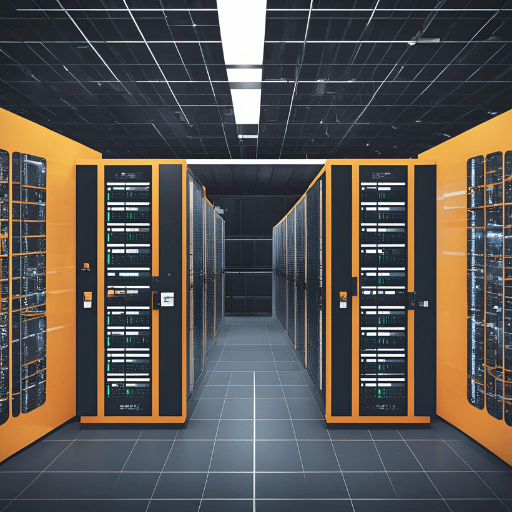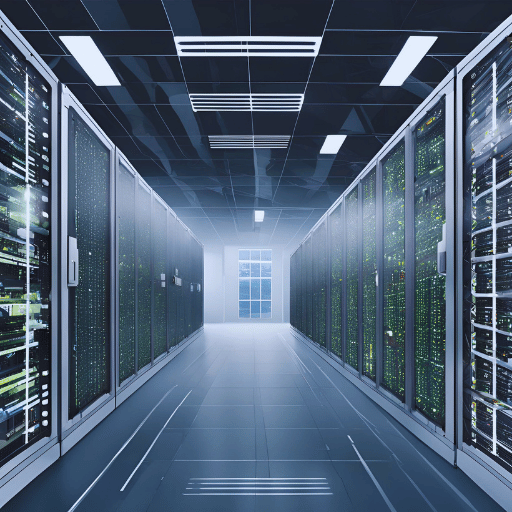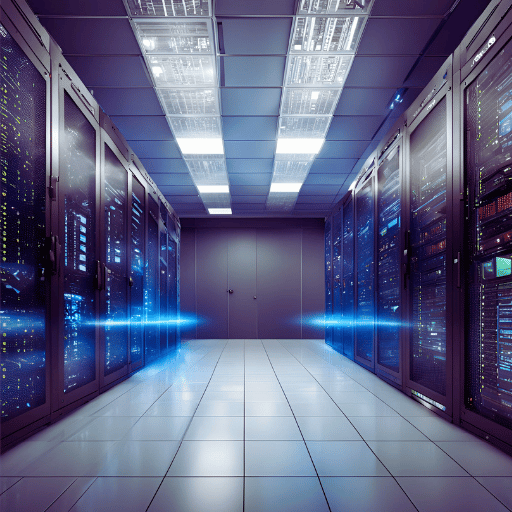The efficiency and dependability of data centers are essential in the current fast-paced digital world. Data centers act as the backbone for present-day enterprises, which handle massive amounts of information; hence, there is a need to ensure that they operate at their optimum level at all times. This manual goes deep into what it takes to monitor a data center effectively by giving tips on choosing the best monitoring system that suits your needs. With an exhaustive approach towards features, advantages, and up-to-date technology, this guide is meant to provide you with the necessary information to run smooth operations while minimizing future problems. Whether dealing with small server farms or large-scale data centers, this book will assist individuals in navigating through the complexities involved in monitoring systems so as to maximize uptime and improve productivity.

A data center monitoring system keeps an eye on many different aspects of data center operations, such as performance, security, and health. Among the parameters it monitors are temperature, humidity, power consumption, network traffic volumes, server loads, and application performances in real-time. With this kind of monitoring in place, IT personnel can spot potential problems earlier on before they become major ones, thus ensuring uninterrupted service delivery throughout the facility. Additionally, it provides valuable input that may aid energy-saving initiatives while protecting against breaches that could compromise system reliability as a whole.
Immediate identification of potential problems leads to their timely resolution, which is why data centers require real-time monitoring. Real-time monitoring involves the continuous tracking of critical elements such as servers, network devices, and environmental controls to determine their operational state. With this knowledge, IT staff can easily react to abnormal situations, thus preventing system downtime and data losses. Such a preventive practice guarantees good performance and quick threat detection that improves security as well as efficient utilization of resources, all these being key ingredients for ensuring the reliability and availability of a facility harboring information.
To ward off system crashes in data centers, monitoring keeps an eye on vital signs all the time and notifies IT personnel about abnormalities before they lead to failures. Early signals of hardware breakdowns, network jams, or power glitches can be detected by data centers using advanced monitoring tools. Real-time data collection-driven predictive analytics facilitate proactive servicing and prompt action-taking. Also, compliance with security protocols can be ensured through continuous monitoring, which detects possible dangers and weaknesses. In this way, downtime is reduced from a holistic standpoint that guarantees the continuity as well as stability of operations within a data center.

These key features should be considered when picking out a data center monitoring software:
By selecting such software, you will greatly improve the efficiency, reliability, and safety of your data center operations.
DCIM software (Data Center Infrastructure Management) can optimize the use and performance of data center resources. To prevent downtime and lower operational costs, power supply real-time monitoring plus control, as well as cooling and environmental conditions, are done by this system. The integration of current IT with facility management systems provides an overall picture of a data center for capacity planning efficiency, among others. Also included in such software is advanced predictive analytics, which may predict problems before they occur, thereby facilitating preventive maintenance and decreasing service outages. Moreover, security is enhanced to ensure compliance with regulations while safeguarding sensitive information, thus making DCIMs essential tools for protecting operational continuity in data centers.
Management and operational efficiency can be improved by the top current data center monitoring tools in the market, which are built with powerful functionalities for this purpose:
All these features deliver faster analytics while still having an intuitive front-end design and strong back-end systems integration abilities necessary for running modern, reliable, efficient data centers.

Temperature and humidity sensors are important components of data center monitoring systems that ensure the optimum operating environment for the equipment. The sensors continuously monitor the surrounding conditions within the data center and provide up-to-the-minute temperature and humidity information.
In conclusion, temperature and humidity sensing form an integral part of maintaining reliable stable environments within data centers by providing essential readings that aid risk mitigation against poor environmental conditions around these facilities.
Data centers cannot function without power and environmental monitoring systems because they are necessary for their efficiency. These systems control temperature, humidity, and electrical consumption in the entire facility. Detecting potential problems before they become catastrophic failures is possible by continuous tracking of these systems’ performance. Good monitoring guarantees top performance by preventing downtimes due to overheating or overloading, among other environmental factors. Moreover, such devices save energy through better distribution of electricity as well as cooling methods, which cuts down costs, thus fostering ecological objectives. In simple terms, this means that power plus environment-watching tools are vital for protecting data center assets while ensuring smooth operations.
Data centers need monitoring tools to detect problems before they happen. By sending instant notifications and detailed reports, monitors can recognize temperature jumps, humidity shifts, or power fluctuations as irregularities. With this early warning system in place, administrators can act fast and fix any minor issue before it becomes a major problem. Moreover, predictive analytics enabled by more advanced monitoring devices help forecast failures by looking at what happened in the past so we know when something might go wrong again — this could be used for preventive maintenance strategies, too! Summing up: if you want your data center’s infrastructure to always work properly without interruptions caused by bad environmental conditions or electricity supply abnormalities – install some monitoring equipment there!

The importance of temperature monitoring in data center operations cannot be overstated as it directly affects hardware performance and longevity. Efficient working of servers and other vital devices is guaranteed by keeping them under the right temperature levels, thus preventing overheating that might result in system crashes or even information loss. Good temperature management can detect heat spots immediately, thus allowing prompt countermeasures such as better airflow planning, among others, which take effect instantly. This not only makes data centers more reliable but also stable while at the same time-saving power through the optimization of cooling systems and elimination of wastage associated with excessive energy use, according to various reports online.
If we want to keep our computer equipment in the data center working well without problems like static electricity or condensation, it’s important to control the humidity there. Some of the best ways to do this are:
When applied correctly, these guidelines improve the reliability of equipment used in these facilities while reducing downtime, thereby increasing efficiency during operations.
In order to monitor other critical environmental conditions in a data center, it is necessary to watch humidity levels as well as temperatures. Below are some tips based on best practices collected from top sources:
Integration of these monitoring techniques will help maintain ideal environmental conditions at all times for data centers while ensuring their equipment is reliable enough and enhancing general operational efficiency.

Levels of Humidity and Temperature
It is important to monitor the data center’s real-time temperature and humidity. Among other objectives, the temperature sensors should be able to follow both ambient and equipment-specific temperatures, thus ensuring favorable thermal conditions throughout. The moisture sensors also help prevent situations that may lead to static discharge or condensation, damaging delicate equipment.
Energy Consumption and Power Usage
Knowledge of power utilization effectiveness (PUE) can enable operators to monitor real-time power usage, revealing energy consumption patterns for proper distribution. This information also identifies potential inefficiencies and power supply problems, ensuring that data centers operate efficiently and sustainably.
Network Performance:
Continuous data flow optimization relies on understanding how different networks perform. Bandwidth use, latency, and packet loss rates, among other things, need to be tracked at any given time so that they do not become bottlenecks, adversely affecting connectivity or service quality in general.
Cooling System Performance:
Continuous monitoring of various aspects of cooling system performance, including CRAC units’ status, refrigerant levels, fan speed, airflow metrics, etc., is necessary. This helps ensure that cooling systems work properly by maintaining the right temperatures and not allowing devices to overheat.
Security Metrics:
Protection against unauthorized entry cyber-attacks requires up-to-date security information, such as access control logs, surveillance camera footage, firewall status reports, and intrusion detection alerts, which should all be monitored in real time.
By monitoring these data points in real-time, we can achieve operational solid readiness with minimal exposure risk, thus achieving maximum efficiency coupled with high-level protection standards within data centers.
In monitoring systems, indicators and limits serve to identify potential problems before they become big. Limits are already decided upon values set for different performance measurement indicators such as CPU use, memory consumption, network traffic, or temperature levels. Any metric being monitored could exceed or not reach such thresholds, thus causing an alert to be generated by this system.
To communicate these alerts, we can use emails, text messages, or integrated platforms like messaging applications. Thresholds are set, and notifications are created to achieve quick response times; any abnormality from standard operational patterns should be dealt with immediately to maintain good performance and prevent downtime.
Furthermore, depending on how severe the limit breach is, alerts may fall under critical ones, warnings, or information, which means prioritizing responses accordingly. If you want to manage your data center proactively, then you must configure alerts properly since they’re one of the key parts for effective resource utilization within the facility, coupled with timely problem identification and resolution.
The significance of a live dashboard in managing data centers cannot be overstated; it shows key performance indicators (KPIs) in real-time, which can aid swift decision-making. It brings together information from different places, giving a holistic view that helps identify patterns, anomalies, and probable challenges when they occur. Real-time awareness of how systems function fosters efficiency improvement, optimal allocation of resources, and continuous monitoring of performance. This approach ensures service uptime is sustained while dealing with any deviations from expected operational states quickly. On-the-fly data representation allows for instant remedial actions, thus enabling data centers to operate at their maximum levels and reducing chances for unplanned shutdowns.

Continuous monitoring can cut downtime and service disruptions by keeping an eye on data center operations all the time, thanks to alerts in real-time, forecasts based on analytics, and responses done automatically. This is because potential issues are flagged early enough before they become big problems through continuous scanning of performance indicators against surrounding conditions, thereby paving the way for proactive maintenance. Predictive modeling, as well as artificial intelligence integrated into these systems, make it possible for them not only to predict failures but also allocate resources optimally so that interruptions are minimized in addition to reporting back all relevant information visually, enabling easy diagnosis and leading to quick corrective actions if there is any deviation thus ensuring continuous service delivery. By all means, reliability should be increased while greatly reducing unexpected downtimes through holistic monitoring, which seeks to improve efficiency in operation.
There are many advantages to remote monitoring in data centers. One of the main benefits is that it increases efficiency by overseeing equipment and environmental conditions around the clock without any staff on site; this helps to recognize problems faster, lowering downtime risks. Another advantage includes security management improvement because, through immediate notifications, it can detect abnormal actions or unauthorized entries into restricted areas while also allowing timely response against such threats. Lastly, it saves money since physical inspections are reduced, thus cutting down operational costs required for maintaining a full-time presence on-site whenever necessary. Besides, advanced technologies such as artificial intelligence (AI) and machine learning could be integrated with current systems to enhance predictive maintenance capabilities thereby ensuring more reliable performance of data center operations.
It is possible to optimize power usage in data centers by strategically using monitoring tools that give a complete view of energy consumption patterns. These instruments use real-time data and analytics to detect inefficiencies and identify energy-draining components, thus allowing load distribution decisions and equipment usage choices based on facts. By continuously tracking power usage across various systems, monitoring tools can recommend the best server workload configurations and cooling system settings, thus minimizing the waste of energy. Apart from this, when IoT devices are integrated, they enable automatic adjustments of power settings only to consume energy when necessary. Additionally, intelligent algorithms coupled with machine learning models forecast peak times for usage and propose pre-emptive measures for balancing loads, improving efficiency about power and maintaining performance levels within systems. All these steps together result in significant cutbacks on electricity consumption and operational expenses incurred by data centers.
A: Data center monitoring involves monitoring and controlling the environmental conditions of a data center to guarantee its efficiency and reduce downtime. This involves measuring temperature, humidity, power distribution, and server performance, among other things.
A: Real-time data center monitoring can only provide immediate knowledge about the state of health and functionality of your infrastructure within the center. It enables operators to rectify any problem quickly, thus preventing downtime, which might affect the stability of the whole facility.
A: Network monitoring is one of the major components of data center supervision because it helps to track how devices are performing and their connections with other networks within this infrastructure. Therefore, the diagnosis should be made on time to have an efficient flow of information.
A: Among the metrics that need constant checking in a data center include temperature, humidity, power usage efficiency (PUE), server performance, network latency, overall system health, etc., so as not to compromise any service being offered by such establishments.
A: PRTG Network Monitor is a network monitor software solution that assists you in keeping an eye on vital areas like servers or networks within your DC. In short, using PRTG operators immediately gathers information from various parts of your DC for effective collection and analysis.
A: Humidity monitoring is important because extreme wetness or dryness can affect the efficiency and lifespan of hardware in data centers. By maintaining suitable humidity levels, operators can prevent equipment breakdowns and ensure steady-state operations.
A: There are many benefits associated with the use of systems for monitoring data centers, such as healthier systems, efficient power distribution, early detection of possible failures, optimization of resource utilization, and overall improved performance of your DC.
A: Power distribution management is achieved through tracking usage inefficiencies, including power and wattage, within a facility. These very same software programs, known as “data center monitor systems,” are designed specifically around this area. This helps optimize power distributions, ensuring all components receive the necessary power without wasting resources.
A: Software solutions play an integral part when it comes to managing data center infrastructures since they offer various tools used for monitoring information collected from different parts of your DC. These also assists with making informed choices while at the same time increasing operational efficiencies.
A: Optimization becomes possible through monitoring collected information from different centers because it provides insight about resource usage, environmental conditions, system health, etcetera. It’s therefore upon administrators to evaluate their performance based on this kind of finding so that they can enhance it further if need be, which leads to better overall performance within a given setting.